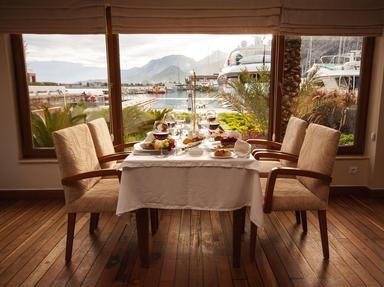Quiz Answer Key and Fun Facts
1. It might be a bit early in the day, but which French delicacies might I be offered for breakfast while travelling on the LGV Méditerranée?
2. On the The Ghan travelling between Adelaide and Darwin, morning or afternoon tea could include which sweet treats?
3. As the Shangri-La Express journeys across the vast expanse of China, brunch or a mid-morning snack could consist of dim sum and tea.
4. As the Blue Train passes the Big Hole at Kimberley, what traditional South African fare could I be offered for lunch?
5. While travelling on the aptly named Glacier Express between Zermatt and St Moritz, what local delicacies could I be offered while I take in the Alpine scenery?
6. On board the Andean Explorer, one of the world's highest train routes, which Peruvian cuisine might be on the menu?
7. After visiting the Red Fort at Jaipur as part of my trip on the Maharajah's Express, what local food might be on the dinner menu?
8. While surveying the wide open spaces of Alaska on board the Denali Star Express, which local dishes could I enjoy?
9. Orkroshka and Blini are examples of local cuisine that could be served on the Trans-Siberian Express.
10. On a trip round Kyushu island on the Kyushu Seven Stars, which dishes would make up a traditional Japanese meal?
Source: Author
KayceeKool
This quiz was reviewed by FunTrivia editor
jmorrow before going online.
Any errors found in FunTrivia content are routinely corrected through our feedback system.
